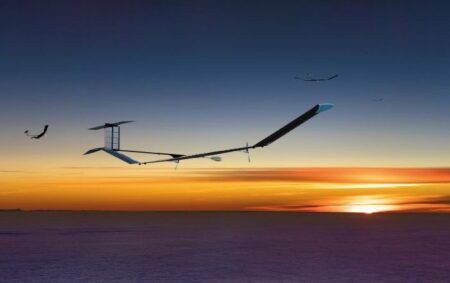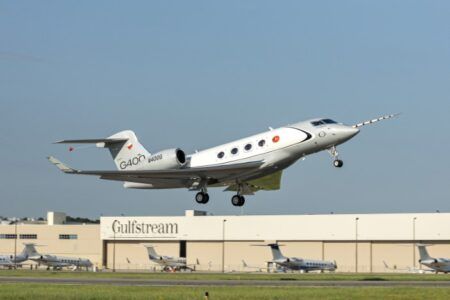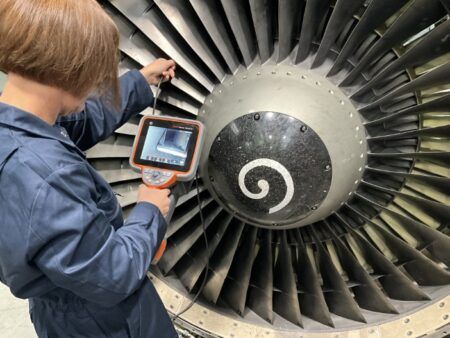It has been 102 years since early parachute inventor Everard Calthrop patented the first ejection seat. The original incarnation used compressed air to propel the pilot clear of the aircraft. Since then air technology has been replaced by an explosive charge or rocket motor, along with a decidedly more rigorous and scientific testing process.
“Aircrew safety is our top priority,” says John Hampton, UTC Aerospace Systems senior manager for ejection seat testing and engineering. “We are committed to helping aircrew return home safely and minimizing the injuries that may be sustained during an ejection so that they can successfully escape and evade in a combat situation and return to fly at the earliest opportunity.”
UTC’s ACES (Advanced Concept Ejection Seat) 5 provides some of the most advanced safety features available, and is an upgrade from ACES II, which was the industry standard for almost 40 years and brought uniformity to ejection seats in the A-10, F-15, F-16, F-22, B-1 and B-2 jets. UTC operates the only privately owned sled test facility in the USA, at Hurricane Mesa, Utah. The Hurricane Mesa Test Facility (HMTF) includes a 12,000ft test track capable of propelling an aircraft fuselage or a representative mock-up on a purpose-built sled at supersonic velocities up to nearly 800mph.
“It’s at HMTF that our ejection seats go through extensive subsystems tests, full system ejection tests and aircraft environmental tests,” says Hampton. “We also use both government and commercial facilities for specialized testing. Altogether, individual tests for each ejection seat subsystem may number in the hundreds and major seat programs may have more than 1,000 tests completed. The subsystem tests include component checks such as parachute deployment, stabilization drogue chute deployment, windblast testing, ejection tower testing, cartridge actuated device testing, rocket testing, reliability cycling tests, seat/man separation, limb restraint deployment tests, and 40g crash testing, among many others.”
In the USA, full system tests require a minimum of 22 ejections, as per requirements mandated by the US Department of Defense (DoD). In addition, just like any other system for a military aircraft, such as avionics, the DoD requires stringent aircraft environmental tests to ensure the system – an ejection seat in this case – will successfully function and perform in the various conditions it may be exposed to on board a military aircraft. These tests include exposure to extreme temperatures, water, salt, fog, humidity, vibration, rain, sand and dust.
Challenges and manikins
“One of the unique challenges with regard to ejection seat testing is designing a seat that can accommodate the US Air Force’s full aircrew size accommodation and weight range from 103-245 lb [47-111kg],” says Hampton. “We’ve addressed this through sitting platform adjustment, seat stabilization and load compensating technologies, and demonstrated in our testing that the ACES 5 seat meets all requirements for the entire aircrew accommodation range.”
UTC uses US Air Force-approved anthropometric test device manikins similar to those used in the automotive industry. These manikins are equipped with sensors to assess articulation of the human body during an ejection. In the past both bears and chimpanzees have been used in ejector seat testing to simulate the approximate size and response of humans.
“We never use humans in our ejection seat tests,” says Hampton. “The manikins we use are approved by the US Air Force because they provide extensive information that we can use to understand probabilities of injury and assess margins of safety.”
Data from the sensors is used to elp predict the movement of a pilot, representative of various weight and height ranges, during an ejection. The recorded movements can be relative to factors including force, biomechanics, velocity and acceleration. Ultimately
this data enables UTC to build better equipment so that the pilot can return home safely with no or minimal injury following an ejection.
“We have developed a proprietary simulation software program that models the entire ejection event,” says Hampton. “The program captures six degrees of freedom – up, down and sideways, as well as rotation – and provides a video graphic output for visual representation that enables the user to see the entire ejection event. This simulation software is also used to analyze ejection test data to better understand the event.” Hampton continues, “UTC Aerospace Systems supports its customers with post-ejection analysis, where data from the seat survivable data recorder is fed back into our simulator to reenact the ejection event.”
Each ejection seat is equipped with a survivable recorder that captures data – including measurements including seat acceleration, aircraft velocity, aircraft altitude, aircraft attitude and ejection event timings – from ejection events. After an ejection event occurs, the data captured can be used in conjunction with the software program to simulate
the event and analyze it with customers.
The future
With UAVs on the rise, the inclusion of cockpits, armor, flight controls and, of course, ejector seats, are all under threat as standard features in military aircraft. The popularity of combat drones is understandable, not least given a lack of pilot means instantly improved safety and lower costs. What are the implications for ejector seats?
“Although militaries around the world are making use of UAVs, as long as there are human aircrew members, we remain committed to ensuring they return home safely,” says Hampton.
Saul Wordsworth is a regular freelancer on all manner of subjects. He has also penned sketches for BBC radio.




